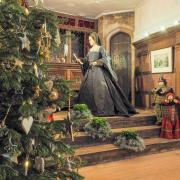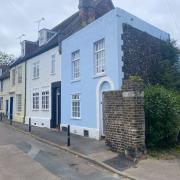Head to the fascinating Huguenot Museum in Rochester and you’ll be able to take a peek inside a miniature domestic world revealed in exquisite detail - from tiny hand-painted landscapes to bedwarmers smaller than a fingernail, postage-stamp-sized carpets to bijoux cribs for miniscule babies – plus the smallest of dolls fashioned out of wax. They are all to be found within the walls of a dolls’ house created in the 1730s for one Sarah Lethieullier, not as a toy but as a teaching aid. As Dr Tessa Murdoch, Chair of the Huguenot Museum Trust, explains: 'A Georgian future ‘Lady of the house’ needed to learn household management and the nine-room Palladian dolls’ house taught Sarah everything she needed to know, from taking care of the objects within the house, to learning the rightful place of her footmen, parlour maid and staff.'

The Huguenot Museum is the first and only museum of Huguenot history in Britain. It tells an important story of Britain’s first refugees, the crafts, trades and skills they brought with them and the impact their contribution has had on the development of our country. It’s especially appropriate that the dolls’ house is on loan here, as Sarah Lethieullier came from a prominent Huguenot family herself - her father was a director of the Bank of England. She went on to marry wealthy Baronet, Sir Matthew Fetherstonhaugh, in 1746 and took the dolls house with her to their married home of Uppark in West Sussex (today in the hands of the National Trust), where it stayed for 250 years, surviving a serious fire in 1989. Over that period, is was much admired by visitors, including novelist H G Wells.
Dr Tessa says: ‘As a 20-year-old, the author spent the winter of 1887/8 convalescing at Uppark, where his mother, Sarah Wells, served as housekeeper. In his semi-autobiographical novel Tono-Bungay (1909) H.G.Wells recounts playing with the Lethieullier dolls’ house. He was inspired by the microcosm of the dolls’ house to recreate miniature worlds in his writing, in particular, his most famous novel The Time Machine.”
The Lethieullier Dolls’ House is on loan to the Huguenot Museum from the National Trust until May 2025.
huguenotmuseum.org




























